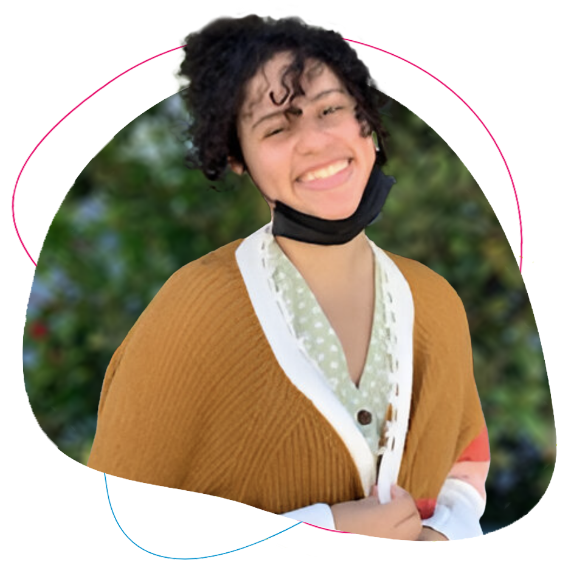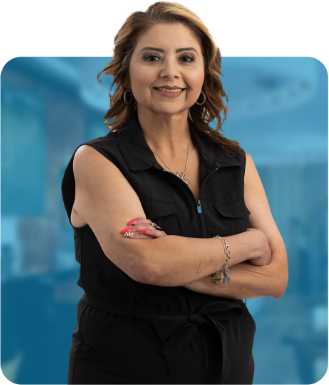LAURA’S STORY
patient Story
“At first they thought I had lupus and then cancer, but that wasn’t it…”
Long diagnostic odyssey with misdiagnoses
Like many patients with type 1 Gaucher disease, Laura’s journey to an accurate diagnosis was long and confusing. When Laura was 4 years old, she contracted Dengue fever and from the tests she took for it, she started to notice what would later be understood as type 1 Gaucher symptoms. A blood test showed very low platelets, prompting Laura’s mother to consult a hematologist, who diagnosed her with splenomegaly and thrombocytopenia. Then, aged 7 years, Laura was diagnosed with rheumatoid arthritis.
Her condition still did not improve, and Laura endured many MRIs, laboratory tests, sonograms, and bone marrow biopsies throughout her childhood, searching for a diagnosis. Her doctors considered lupus and cancer, until in 2014, both of Laura’s knees became inflamed and she was hospitalized, leading her rheumatologist to consult a geneticist. A bone marrow biopsy confirmed a diagnosis of type 1 Gaucher disease after 8 years of uncertainty. Laura and her family were relieved to finally understand what her underlying condition was but also worried about this rare disease.
patient profile
NAME: Laura
AGE: 20s
AGE AT TYPE 1 GAUCHER DIAGNOSIS: 12
ETHNICITY: Hispanic
TREATMENT HISTORY: VPRIV, 8+ years
SYMPTOMS AT BASELINE: Enlarged spleen, low hemoglobin, low platelets

“My left side was swollen because of my large spleen and the other kids would tease me.”
Gaucher disease impact on school and social life
As Laura was growing up and searching for a diagnosis, she regularly had to visit hospitals and emergency rooms, so she missed a lot of school. Her type 1 Gaucher symptoms also prevented her from participating in many activities during her childhood. She felt weak, unable run, jump, or keep up with her peers. It was difficult for Laura growing up with her disease, she felt isolated and separated from her classmates, and she didn’t have opportunities to meet other people with type 1 Gaucher disease.
“My doctor knows almost everything about me because she has seen me grow up.”
Building a strong patient-doctor relationship
In addition to Laura’s strong family support from her mother and father, her doctors and nurses have played an important role in Laura’s type 1 Gaucher disease journey. She has developed a special connection with them during her many hospital visits. Although she doesn’t always want to go to her hospital appointments, she trusts and confides in her doctors.
As well as asking about her condition, they talk to her about her personal life and her hobbies. They know almost everything about her as they have seen her grow up, and to Laura, it feels like spending time with another family member. She will seek their advice whenever she wants to try something new to understand any potential impacts on her disease and how to mitigate them.

“I believe VPRIV works well for me.”
Laura’s VPRIV routine
In 2014, shortly after her diagnosis, Laura and her doctor discussed her treatment options. After starting treatment with VPRIV, they were pleased with her improvements in hemoglobin concentration and platelet levels. Laura has been on treatment with VPRIV ever since. She has developed her own VPRIV routine that works for her. Once every other week, on the days of her infusion, she will have breakfast before going to her appointment. She will sleep or talk to people during her infusion as the time passes. Laura believes VPRIV works well for her, and it is important for her to have her treatment regularly, without missing a dose.
DOWNLOADABLE RESOURCE









